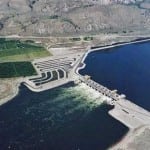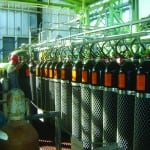Ever since Prometheus stole fire from Zeus and gave it to the mortals on Earth, man has had a love-hate relationship with combustion. Fire can be used for light, heat, and cooking, and it is essential to most electricity generation. But fire also can be very destructive. Arson alone destroys more than 100,000 buildings each year at a total cost of more than $1.5 billion, and the toll from accidental fires is much greater.
For power engineers and technicians, close control of fire—whether in the firebox of a Powder River Basin coal-burning boiler or at high pressure in a gas turbine combustor—is central to efficient plant operations. However, the accidental fires that occur outside of these combustion compartments are what keep safety supervisors awake at night.
The philosophy of FM Global— the world’s leading provider of property and business insurance to industries including power generation and utility companies—is that most losses from fire are preventable. Accordingly, the company and its engineering and research experts spend a lot of time solving very challenging property-loss-prevention problems. An example is preventing fires caused by flowing lubricating oil, either as a spray or a spill.
According to FM Global’s Power Generation Industry leader, Terry Cooper, the average cost per square foot of an open floor power generation plant is a whopping $2,200. Given the high price of their “real estate,” it behooves power engineers and technicians to understand the fire hazards present in their plants and to have access to solutions designed to cope with those hazards.
Setting the Stage
In the summer of 2004, FM Global conducted a series of large-scale tests to examine how effective various sprinkler configurations are at mitigating hazards found in the turbine halls of power plants without operating floors. The tests examined three different kinds of hazards—spray fires, three-dimensional spill fires, and pool fires—using mineral oil as a fuel source. The study had two objectives: provide detailed visual documentation of potential fire scenarios in turbine halls and inform the comparison of new and existing schemes for mitigating losses due to fires.
To conduct the study, FM Global engineers built a large-scale mockup of a turbine hall (Figure 1) and placed it on a pedestal under a movable ceiling inside the Large Burn Laboratory at FM Global’s Research Campus (see “The University of Loss Prevention” sidebar). The pedestal, which cost $80,000, was made of steel rather than concrete because it had to be somewhat “portable” to accommodate various tests. Measuring 15 feet wide by 20 feet long by 18 feet high, the pedestal was equipped with a 7.5-ft grated walkway extending along one edge, to simulate an open-floor design. To prevent fire from deforming the pedestal during testing, water was pumped through pipes in its legs.
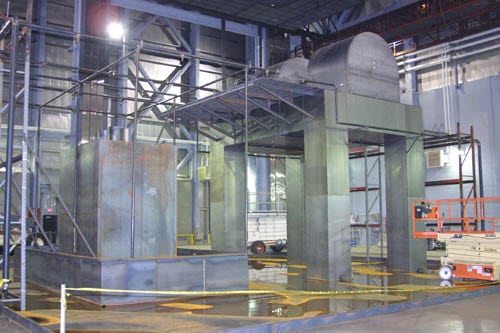
1. To physically simulate turbine lube-oil fires for analysis, FM Global built this power generation hall mockup in the Large Burn Laboratory on the company’s Research Campus in Rhode Island. At left is a lubrication-oil tank surrounded by a containment dike. At right is the pedestal, with high- and intermediate-pressure turbine housings on top and the grated floor/walkway extending out from the platform. Courtesy: FM Global
Once the pedestal was built, a lube-oil tank and pumping unit and high- and intermediate-pressure turbine housings were placed on it. Finally, after a dike was built around the lube-oil tank to contain spills, testing was ready to begin.
Striking the Match
FM Global statistics indicate that oil releases in power plants are caused by fitting failures (50%), operator error (30%), vibration (6%), and electrical failure (6%). There are three different kinds of oil-fueled fires:
- Spray fires, which result when oil is released at high pressure.
- Pool fires, which burn oil that has accumulated on a floor or in a contained area.
- Three-dimensional spill fires, which result when unpressurized oil leaks from a tank or piece of equipment, flows “downhill,” and ignites along the way.
To create data for the study, 23 fires were intentionally set: 10 spray fires, 11 pool fires, and two three-dimensional spill fires. The following sprinkler types and configurations were tested:
- Sprinklers with K-factors of 2.6, 5.6, 8.0, and 11.2 gpm/psi?.
- Sprinkler arrangements of 10 x 10 ft, 8 x 10 ft, and 5 x 5 ft.
- Sprinklers with discharge pressures up to 100 psi.
- Sprinklers with densities ranging from 0.2 to 3.9 gpm/ft2.
The fuel source was a standard mineral oil with a flash point of 285F and a heating value of 20,000 Btu/lb. Once ignited, this oil burns like gasoline.
Lessons Learned
During the 10 spray fires, ceiling temperatures reached nearly 1,500F without the sprinklers turned on and only slightly less than that with ceiling sprinklers alone. It’s worth noting here that temperatures above 1,000F can lead to steel deformation and, ultimately, roof failure.
The overall study produced both good and bad news from a property protection point of view. The good news was that floor-level sprinklers with a K-factor of at least 8.0 gpm/psi? and a discharge pressure of at least 50 psi were able to control all fire scenarios if positioned correctly. During the tests, the sprinklers, which were located on a 5 x 5-ft grid, also reduced gas temperatures at the ceiling from 1,500F to well below 400F.
As for the bad news, one of the biggest surprises of the study was that using an insufficient amount of water to douse a fairly routine pool fire actually made the fire worse. The fire erupted, engulfing the entire turbine platform in a fireball (Figure 2).
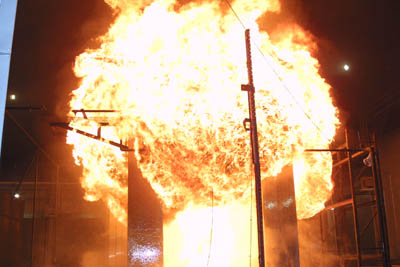
2. During one of the 10 spray fires set during the study, a huge fireball engulfed the mockup. Courtesy: FM Global
Among the study’s other noteworthy conclusions are the following:
- Spray fires and three-dimensional spill fires cannot be extinguished or controlled by ceiling sprinklers alone.
- Pool fires can be extinguished by ceiling sprinklers, but sprinkler density and ceiling height determine their effectiveness. The greater the distance between the sprinkler and flame, the greater the water density needed to put out the fire.
- Local sprinkler protection (that is, custom-designed units that provide a water source much closer to the targeted area) can control pool fires but cannot extinguish them.
- Lube oil, hydrogen seal oil, control oil, and hydraulic fluid present clear hazards that can cause heat damage to roofs, cranes, turbines, and other building contents.
- A multi-step approach is needed to put out fires fueled by these oils and fluids and to minimize damage.
Perhaps the most surprising conclusion of the study is that even a tiny release of oil can cause a huge fire. In very large gas turbines, oil often is pumped at a rate of up to 800 gpm. But although FM Global pumped the mineral oil at a mere 20 gpm during the tests, the fires that resulted were eye-popping. Figures 3 and 4, which were captured by an FM Global photographer during the study, show how large and dangerous the three kinds of oil fires can be.
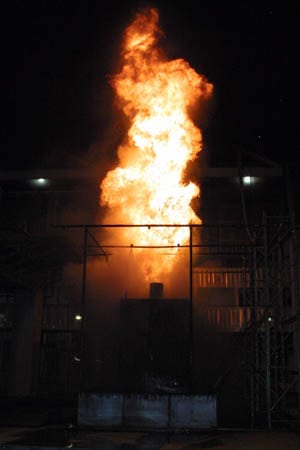
3. Spray fires can occur when there is a break in a lubrication system fitting or seal. The largest spray fires produced during FM Global’s test program had a thermal rating of 20 to 40 MW, equivalent to that of a fully burning small to midsize house. Courtesy: FM Global

4. In three-dimensional spill fires, rising and falling flames give the appearance that the fire is moving up and down simultaneously. This can happen when oil leaks at a fitting or flange between a lube oil pipe and a bearing on the turbine’s upper level. Burning oil then spills to the surface below, creating a pool fire on the lower level. Courtesy: FM Global
Prevent to Protect
Seeing the devastation caused in seconds by a lube oil leak in a mockup of what looks a lot like your plant should lead you to wonder whether your sprinkler system is up to par—as well as whether you have enough insurance. But the photos of real-life tests by FM Global’s research engineers, while dramatic, should also drive home the point that simulation followed by testing is the only way to identify ways to prevent and mitigate property losses in power plants.
As a service to the generation industry, FM Global has summarized four steps plant managers, operators, and technicians can take to prevent and/or mitigate the damage from turbine lube-oil fires (see sidebar). Naturally, the first recommendation is stopping the flow of the oil as quickly as possible. But if doing so also stops the flow of lube oil to the steam turbine, its bearing could be damaged or even seize, necessitating a very costly repair.
For this reason, FM Global advises power plants to have in place a multi-level procedure for shutting down key equipment in the vicinity of a fire over a 20- to 45-minute period. During this time, other steps also can be taken to minimize the impact of the fire on the plant as a whole. The importance of having such a procedure in the plant operating manual should be clear because worrying about the steam turbine seizing during a fire is probably low on your to-do list at that moment.
Who would have thought that the insurance business could be so interesting?
—Dr. Robert Peltier, PE is POWER’s editor-in-chief.








